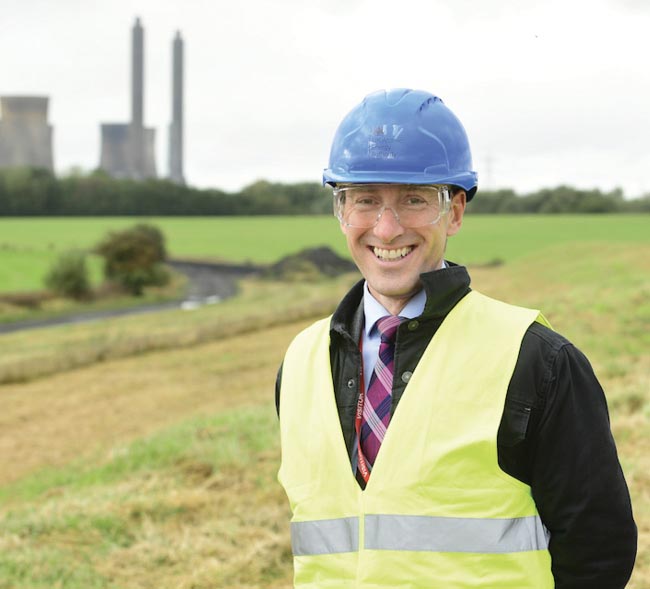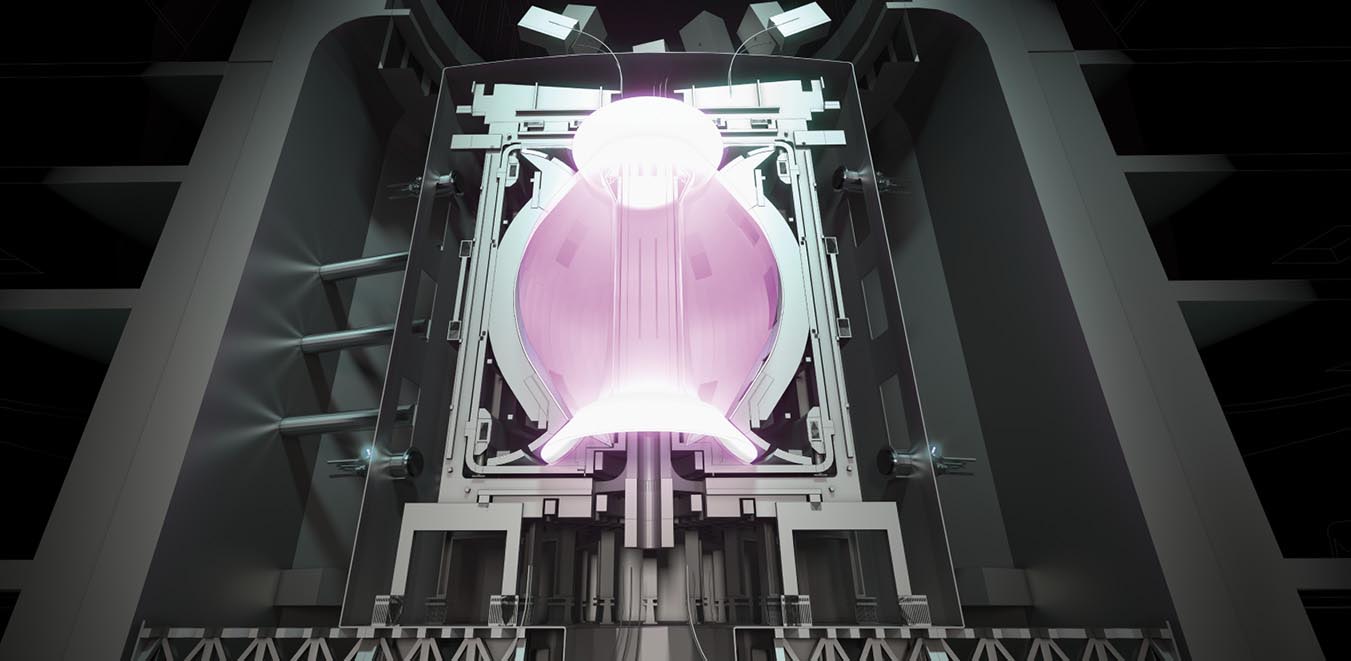UK coalition gears up to demonstrate commercial viability of fusion energy
DOI: 10.1063/pt.pbrf.umbp
The UK plans to build a prototype fusion plant by the early 2040s that can put electricity on the grid and demonstrates that fusion energy is commercially viable. Researchers with the Spherical Tokamak for Energy Production (STEP) hope to produce about 100 MW of net electricity with the new plant, sustain the amount of tritium needed to spur fusion reactions, and show that the plant can be maintained over time, says Paul Methven, CEO of UK Industrial Fusion Solutions, a private entity established by the UK government that is responsible for the delivery of STEP. The goals are “massively ambitious,” he says, “but just about doable.”
The idea that fusion energy is “getting closer to commercialization started with the UK going out for a site and creating the STEP program,” says Stephen Dean, the president of Fusion Power Associates, a research and advocacy organization that disseminates fusion-development information. In doing so, he says, the UK took the lead on the spherical tokamak.
Achieving the STEP milestones will position the UK to be at the forefront of fusion energy, says Methven. It will also create thousands of jobs, he says. UK Industrial Fusion Solutions will work with the UK Atomic Energy Authority, private companies, and other partners to deliver the plant.
The STEP team released the initial concept design in August. Magnetic fields within the spherical tokamak will confine a plasma of deuterium and tritium and heat it to more than 100 million degrees Celsius to spur nuclear reactions and produce energy. The tokamak will measure about 10 meters in diameter. In comparison, ITER, the international fusion-reaction prototype under construction in France, has a diameter of 19.4 meters (see Physics Today, August 2023, page 18

Paul Methven, the CEO of UK Industrial Fusion Solutions, leads the development of the UK’s first prototype fusion power plant.
UK ATOMIC ENERGY AUTHORITY

So far, the UK government has invested £300 million (about $390 million) into STEP, but it’s too early to know how large the tab will grow. The facility will be located at the West Burton site of a former coal station in Nottinghamshire. (The last UK coal plant, at Ratcliffe-on-Soar, closed in late September.) Ash cleanup and other preparations are underway, says Methven. Construction is to begin around 2030.
Navigating the roadblocks
“The first challenge is to get to the burning plasma,” says Steven Cowley, director of the Princeton Plasma Physics Laboratory. That’s when energy released in fusion reactions heats the plasma faster than it cools, and the reactions become self-sustaining. Fusion from magnetic confinement has never produced more energy than is inputted.
Neutrons released during fusion reactions damage the tokamak walls. Methods are still needed to fix damage to the confinement walls without being exposed to the extremely radioactive environment, says Cowley. Robots may be used to conduct remote maintenance.
Tritium production presents another hurdle for researchers. Nuclear fusion fuel typically consists of a 50-50 blend of deuterium and tritium. The latter exists naturally only in trace amounts and has a half-life of about 12 years, so breeding and stockpiling is difficult, says Holland.

The UK Atomic Energy Authority released designs for a spherical tokamak to be completed by the early 2040s.
UK ATOMIC ENERGY AUTHORITY

STEP builds on advances in fusion around the world: Lawrence Livermore National Laboratory achieved ignition at the National Ignition Facility through a different approach to fusion (see “National Ignition Facility surpasses long-awaited fusion milestone
Entities around the world are working on putting fusion energy on the grid. In the private sector, for example, Commonwealth Fusion Systems in Massachusetts plans to focus on energy production in the 2030s with a high-field tokamak. Helical Fusion in Japan is constructing a stellarator—another magnetic confinement approach—to produce energy in about a decade. Others are also making progress (see “Investments in privately funded fusion ventures grow
“There are several horses in the race, but no one is sure who is in the lead or even when they will finish,” says Dennis Whyte, a fusion researcher at MIT. He says that STEP’s purpose “is not just to have a successful device on the grid but to build a fusion industry and the platform for the supply chain. STEP researchers are making a commitment to take on all the challenges.”
